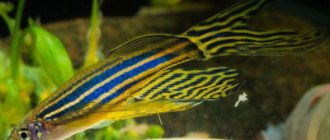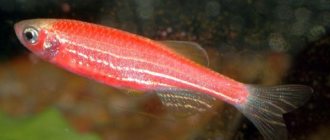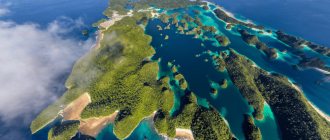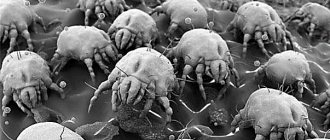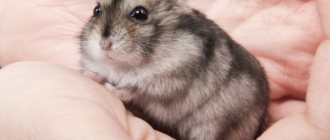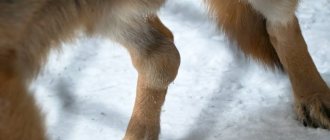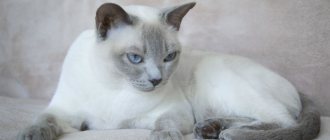In the second half of the 20th century, small aquarium zebrafish were introduced from Southeast Asia. Pets quickly became popular among lovers of artificial reservoirs due to the diversity of species and the beauty of color. The beginning of the 2000s was marked by the successful completion of an experiment on the genetic modification of the Rerio species, which led to the bioluminescence of the individual. These hybrids were called GloFish. An unusual fact from Danio’s life is his stay in space at an orbital station as part of scientific research.
Description and natural habitat
Ray-finned fish of the Cyprinidae family are found in slow-flowing rivers of India, Pakistan, Nepal, Thailand, Myanmar, Bangladesh, Bhutan, Pakistan and the Sunda Islands.
Danio lives in schools, is active, inhabits the upper and middle layers of water bodies, and is non-aggressive. It feeds on small insects and their larvae and is a predator. It reproduces by spawning and has the shortest incubation period, only 3 days.
The external characteristics of Danio do not differ much from the classic ones. The elongated spindle-shaped body is laterally compressed. The fins are small at a young age and later grow into a veil-like shape. There are specially bred veil-tailed varieties. The size of an adult varies from 2.5 to 14 cm.
Photo gallery of zebrafish:
The color of the fish varies depending on the species; wild specimens are silvery, slightly transparent, and have the ability to change shades of scales (pink, olive, blue). The fins are transparent with a rainbow tint.
Sexual differences are pronounced; the female has a full abdomen, slightly sloping down. Life expectancy, subject to maintenance conditions, reaches 7 years for large species, 4 years for small ones (up to 5 cm).
FEEDING
In general, ZANIO FISH is very unpretentious in nutrition. So many owners don’t rack their brains for too long and feed their fish exclusively with dry food. Yes, fish can easily live their whole lives like this and give birth to offspring, but in this case their immunity is reduced, which means they are more susceptible to diseases, and also grow noticeably slower. Therefore, it is advisable, if you do not feed them with live food alone, then at least regularly add it to the fish’s diet.
We are all well aware of the zebrafish, the care and maintenance of which should not become a heavy burden even for a still completely “green” aquarist.
This is indeed true, because the unpretentiousness of zebrafish, their compatibility with other species and excellent health are generally recognized properties of the species, and these characteristics have been confirmed by many years of successful breeding and keeping of these wonderful creatures.
The genus Danio belongs to the carp fish family. This can be confirmed by the presence of small antennae located on the sides of the fish’s mouth, which is a kind of calling card for all representatives of this noble fish family.
This is a very small fish, usually not exceeding 5-6 cm in length in aquarium conditions. The zebrafish has a thin body, slightly flattened on the sides. And the hallmark of the zebrafish itself, of course, should be considered its striped coloring.
The body of the fish itself has a yellow color of different shades, but the dark stripes in most varieties of zebrafish are located strictly horizontally and run from the head to the very caudal fin.
In the wild, these fish live in the calm, slow waters of rivers and reservoirs in Southeast Asia. Such large and significant rivers as the Ganges, Mekong, and their tributaries are home to these wonderful aquarium inhabitants.
In general, zebrafish are really very easy to care for and undemanding to the conditions of keeping in an aquarium. They are practically omnivores, can easily tolerate changes in temperature and acidic water parameters, are very friendly to their neighbors and do not have an increased tendency to certain diseases.
At the same time, even such “Spartans” have their own specific requirements, subject to which a responsible aquarist will be able to significantly improve the quality and life expectancy of his striped pets.
Mr. Tail recommends: variety of species
Danio is one of the pets that has the most striking color differences depending on the variety. Hybrids are beautiful and diverse, which is probably why the fish is so popular among breeders.
Expert opinion
"Danio" or "Dhani" is translated from the Indo-Aryan (Bengali) language Bunkli, which is the official language of Bangladesh and some other countries of South Asia, translated as "rice fields". The species was first described by Francis Hamilton at the beginning of the 19th century, but of the variety of fish initially included in the classification, Danio dangila and Danio rerio remain valid.
A century after its discovery, the species has undergone significant changes. Large individuals remained classified as Danio, while small ones were united in the Brachydanio family.
In 1991, another recombination occurred - the largest varieties were reclassified as Devario, and small individuals of Danio began to be called Brachydanio.
Currently, 27 natural genera belong to Danio. In addition, bright selective breeds have been developed.
Rerio
The most famous fish in a sailor's vest will grow up to 7 cm. The silver body is decorated with longitudinal blue stripes; on the fins the lines turn into an intricate geometric pattern. There is a veil form of this species.
Devario
They grow up to 12 cm in length. The back is silver. From the eye to the tail, bright blue and golden strokes replace each other, interrupting closer to the head and turning from horizontal to vertical. The lower part of the body and ventral fins are yellow-orange.
Dangila
The fish, no more than 10 cm, has a light olive body color, the abdomen is yellower and brighter. Dark gray patterns run along the side surfaces, vaguely reminiscent of a honeycomb. The gill cover has a black spot.
Erythromicron
The variety is 2.5 cm in size and has a bright color. On the golden body there are blue transverse lines that form a zigzag. The lower fins and gills are red. There is a dark blue dot at the base of the tail. The back is slightly darker than the main tone.
Burmese
Individuals 8 cm in length are beautifully colored, the body shimmers with a rainbow, the fin is decorated with a gold border. Small inclusions are scattered along the bluish back. Closer to the tail there is a reddish-orange stripe.
Bengal
The variety grows up to 8 cm and is associated with crystal fish. The light gray body has a blue tint, yellow dots and lines are randomly scattered on the sides closer to the tail.
Kerry (blue)
Another dwarf variety (5 cm) with a striped suit. The rich blue body has shades of purple. Contrasting thin lines have a slight pinkish tone. The fins closer to the base are colored olive.
Spot
Adults are 4 cm in size, similar to Rerio. The same body color and pattern, the only difference is the color of the abdomen, here the line is formed by small, almost black dots, which also adorn the anal fins.
Pearl
The fish seem to be showered with a glitter of blue and pink tones. The back is silver. A reddish streak runs from the middle of the body to the base of the tail; the belly is the same shade. At the head the colors fade a little. Length up to 5 cm.
Pink with cherry
Small, only 4.5 cm. Bright pink, lined with white lines extending to the fins. The back is a richer berry shade, the belly is slightly lighter. Content temperature +21…+24 °C.
Firefly
A dwarf variety measuring 3 cm. Painted with gold, like a ray of sunshine. The tail has a bright orange oblong spot. The fins are transparent with a slight yellowish tint at the edge, outlined by a thin black line.
Margaritatus
In terms of brightness of color, the species competes with the clown. Blue and red shades are interspersed with stripes and dots. The back, iridescent blue, is strewn with light yellow splashes. The belly is red. The fins are painted with wide coral lines on a transparent background. This variety is also called Galaxy.
Malabar (malabaricus)
The pet is up to 10 cm in size. Recently it is rarely found in aquariums. The main body color is silver; a wide greenish-blue line with rich lemon-colored markings runs along the center of the side of the body.
Glofish
Artificially bred, no more than 5 cm in size, distinguished by a variety of colors. There are red, yellow, green, blue, purple individuals. The design on the body is barely noticeable, but under artificial lighting there is a glow, which is the product of the scientists’ work. These fish are also known as neon fish. Comfortable temperature in the tank is +26…+28 °C.
Leopard or brindle
This variety of Danio was bred by selection. It has characteristic black spots on a silver-gold body. A beautiful and rare pet.
Main diseases of zebrafish
Bloating
Danio pink very thick
The first signs of the disease are an increase in the abdomen by 2 times. Some aquarists confuse this with overeating or spawn, but in most cases it is bloat.
Zebrafish are prone to it and very often their owners encounter this problem. Danio lies on the bottom, practically does not swim, does not come into contact with fish, and its belly is much larger.
Treatment: metronidazole (1 tablet per 30 liters of water). In a week the disease should go away. For prevention, you can also “drink” other inhabitants in the aquarium - there is nothing wrong with that.
Pink Danio swims sideways
In some cases, the fish begin to swim in a circle, but remain quite active and react to other participants in the “movement”. As a rule, this behavior occurs during poisoning. Some individuals are very sensitive to the amount of nitrates, so you just need to replace the water with normal composition and periodically (once every 3 days) change 1/3 of the aquarium water.
Growths
There are practically no such growths on zebrafish, but if such a disease occurs, then you just need to increase the salinity of the water and the temperature. Place the fish separately in a jar and add 2 tablespoons of salt. Keep it there for 15 minutes at +28 degrees, then put it back into the general aquarium. The fluffy growths will die and come off in a couple of days.
Bug-eyed
Most often they suffer from bulging eyes. The disease usually affects them at the age of several years during spawning. The body color does not change, but the abdomen noticeably increases, which looks natural during the spawning period. Over the course of two weeks, both eyes protrude more and more out of their sockets, then fall out one by one. The blind fish dies from exhaustion. When opened, a thick white mass is found behind the eyeball, which causes bulging eyes. The reason is poor quality water. Treatment: partial water change every 2 days.
Danio pink turned white
Trichodinosis
The causative agent is the ciliate Trichodina, which has spine-like processes with which it attaches to the fish. Localized on the gill filaments and skin. Enters the aquarium along with plants, soil and food if they have not been properly disinfected.
Signs of the disease: the fish begins to rub against hard objects and plants, and more often than usual swims up to aeration bubbles. As the disease progresses, the color of the fish fades, and a grayish-white coating is visible on the skin, which is separated in flakes. Treatment of trichodinosis: increased aeration, increased water temperature to 31 degrees. Therapeutic baths are made in a separate or common aquarium with table salt or trypaflavin.
Danio pink loses weight
Tuberculosis
How to carry out treatment? It is best to feed fish food with kanamycin or rifampicin.
You can simultaneously add these medications to the water of the aquarium or special aquarium in which the treatment is being carried out.
If the fish no longer eats, but you really want to save it, then you need to remove it and add medicine to the water.
Kanamycin - 3 g per 100 l, rifampicin - 600 mg per 100 l of water.
Antibiotics should only be added to the aquarium if absolutely necessary. They kill nitrifying bacteria in the soil and filter, and disruption of the biological balance is inevitable when using them.
Adding antibiotics to the feed will be the best solution to the problem. The easiest way is to soak bloodworms (live ones are better, but high-quality ice cream will do) in a strong solution of kanamycin (0.5-1 g per 50-100 ml of water) for half an hour to an hour, and then feed it to the fish.
One feeding per day should be with this food. Noticeable improvements occur after a week's course.
After two weeks, the fish begin to look quite healthy and treatment can be stopped.
For prevention, it is worth conducting monthly weekly courses. It is difficult to saturate other foods with antibiotics. It will be washed out very quickly, which will negatively affect the beneficial microflora of the aquarium. So bathing bloodworms in medicine is the right thing to do.
Danio pink loses color
Alkalosis
Symptoms:
- Cough,
- Excited behavior
- Jumping out of the water
- Labored breathing
- Scratching
- Bloating
- Lightening the color
- Spread fins
- Excessive mucus production
Acute alkalosis: the fish have dull skin, splayed fins, rapid breathing, mucus is released from the gills, the fish begin to rush around the aquarium, trying to jump out of it.
Chronic alkalosis: Signs are less obvious and include difficulty breathing and "coughing", excessive mucus production and itchy skin as a result of irritation caused by high acidity or alkalinity of the water. Problems with osmoregulation caused by chronic alkalosis can lead to bloating
This condition occurs when the pH of the aquarium water is above the pH range that is optimal for the fish of that species.
This disease does not necessarily affect all aquarium inhabitants, because fish of different species differ from each other in the range of pH values acceptable to them.
The disease may be acute if the change in pH occurs quickly, or chronic if the change occurs gradually over a period of time.
Alkaline water irritates the external surface of the fish's body (including the gills) and can cause adverse physiological changes.
Treatment
A suitable pH level must be set. This can be achieved using a suitable pH buffer (available from a pet store).
To slowly adjust the pH, it is better to use repeated partial water changes, and fresh water should have a pH close to neutral. This is the best way to solve pH problems, since repeated partial water changes will eliminate the main cause - reducing the too high mineral content, which usually leads to chronic alkalosis.
Preparations:
- pH buffer
- timely water changes
Prevention:
Prevention. Alkalosis can be prevented by selecting fish species for which the aquarium water has a suitable pH value, or by changing the pH level so that it suits the intended inhabitants of the aquarium, while they themselves must be compatible with each other in relation to pH.
Choose a tank design that does not adversely affect the desired water chemistry. Check the pH value regularly to detect the first signs of leaching due to calcium contained in aquarium decorations.
Acute alkalosis: Survival of sudden large changes in pH is unlikely unless the pH is immediately returned to normal levels. If the pH is returned to normal gradually, then the fish will be exposed to the harmful effects of an inappropriate pH for too long.
However, acute alkalosis is usually fatal, even if corrected quickly. Therefore, it is very important to determine the cause of the problem and take necessary measures to prevent it from recurring.
Chronic alkalosis: The pH needs to be slowly adjusted to bring it within the optimal range for the fish. The rate of pH change should not exceed 0.3 units. per day so that the fish have the opportunity to gradually adapt to the changes.
There is a risk of infection that accompanies or follows alkalosis. This infection is possible as a result of stress-induced suppression of the fish's immune system (especially if the problem is chronic).
Due to inappropriate pH values, gills and skin membranes are damaged, making them vulnerable to secondary infections.
Beautiful and bright, like precious stones, zebrafish were brought to Europe in 1911. They first appeared in Russia in 1958. The homeland of these fish is Southeast Asia: Thailand, Myanmar, Sunda Islands. The peculiarity of zebrafish is that their translucent body changes color. Sometimes the fish takes on a pink tint, sometimes bluish or olive. Along the entire length of the fish there is a clearly visible reddish stripe with a border. In young individuals it is more noticeable, in adults it disappears completely. The body of the fish is somewhat flattened on the sides. The dorsal and caudal fins are greenish-yellow. The anal fin is yellowish-spotted. If you look closely, aquarium zebrafish have small whiskers that point downward.
Today, aquarists breed such species.
Rerio
A silver-colored fish with a body length of up to 70 mm. The body is dotted with longitudinal stripes of dark blue color. There are also stripes on the fins. Sometimes the fins are decorated with a yellowish border.
Devario
These fish, compared to rerio, are larger. They grow up to 100–120 mm. The main background is silver, with bluish stripes. The spaces between the stripes have a golden yellow hue.
Dangila
The length of an adult individual of this species is 100 mm. The main background of the fish is gray-olive, with chain patterns of a darker tint. There are also dark spots behind the gill covers.
Erythromicron
This is a miniature species of zebrafish, with a length of up to 25 mm. The background is golden with a bronze tint. The stripes are dark blue, transverse, brindle-type. The color of the gill covers and fins is orange with a slight reddish tint.
Burmese
These beauties have a body length of up to 80 mm. Golden specks are scattered across the bluish background. This species is characterized by an orange-yellow spot behind the gill covers.
Bengal
The main tone is light gray, mottled with longitudinal bluish and yellow stripes. Bengal danios have a long dorsal fin. The average length of an adult is 70–80 mm.
Kerry
One of the most beautiful zebrafish. The color of the fins is olive, and the body is bright blue, with two pink stripes. The dimensions of these fish are 50 mm.
Spot
They resemble rerio in color: the same silver with dark stripes. But there is also a difference. At the bottom of the body, the stripes are not solid, but seem to form a dotted line. These fish grow to no more than 40 mm.
Pearl
The color of these fish is light blue, length up to 50 mm. The bluish tint intensifies towards the tail. The tail is decorated with a bright orange stripe, which is a distinctive feature of pearl danios.
Pink
Small fish - 45 mm zebrafish. The lower part of the body is painted bright pink. The main tone is bluish-silver. The anal fin is decorated with a pink stripe.
Firefly
Another miniature view. The fish grows to only 30 mm. The color is bright, sunny, orange-yellow. The area from the head to the fin on the back is decorated with a shiny stripe of a sunny orange hue.
Margaritatus
The most colorful and elegant species of zebrafish. The body of the fish is dark gray with yellow spots, and the fins are decorated with bright red (sometimes orange) stripes.
Aquarium Basics
An unpretentious pet in nature lives in packs, so breeders recommend taking from 6 individuals or more. Keeping 2-3 individuals will lead to aggression and constant stress, the fish will quickly die. The tank volume is chosen to be medium, from 50 liters or more. They prefer long aquariums in which Danios could accelerate. Active and playful fish can jump out of the water, so the pond must be equipped with a lid.
In nature, pets live in rivers, but it is not necessary to create an artificial current; they feel good without it. Equipment you will need: thermostat, compressor and filter.
The chemical composition indicators are as follows:
| Rigidity | Acidity | Temperature |
| 5-15° dH | 6.5-7.5 pH | +22…+26 °С |
Pets cannot be placed in a freshly created environment. It is necessary to give the reservoir time to stabilize nitrogen compounds.
Changes are made once a week with a volume of 1/5, the liquid being poured must be left to stand for at least 3 days. You can clean the bottom less often, once every two weeks, but you should constantly monitor the composition. If the chemical indicators change, the content of ammonia, nitrites and nitrates in the water increases, you need to remove the pets and carry out normalization work using special preparations.
To ensure that the brightness of the color of the fish is not lost, good lighting is needed. The optimal daylight hours for Danio are 10-12 hours.
The soil is chosen at your own discretion, the main thing is to prefer light shades. Before filling the tank, rinse it thoroughly with hot water. The vegetation used is low and dense, where fish sometimes hide. Be sure to leave as much space as possible for swimming and playing; algae is located on the sides of the tank and along the back wall. It is better not to occupy the upper layers with flora.
Diseases
The fish are hardy and have good immunity. Zebrafish diseases appear due to improper care: pollution and poor nutrition.
Bloating
Signs:
- enlarged abdomen;
- the carp lies on the bottom;
- lack of contact with the flock.
As a treatment, dilute 1 tablet of trichopolum in 30 liters of water. The procedure can be carried out in a general aquarium; it will not harm healthy inhabitants.
Growths
Rare disease. Place the affected individual daily for 15 minutes in warm water with added salt (1 tablespoon per half liter).
Swimming in circles
The unusual method of swimming causes nitrate poisoning. Replace the entire volume of water and change 1/3 of the aquarium every day for a week.
Bug-eyed
A common disease caused by pollution. Without help, the fish lose their eyes and go blind. As a treatment, rinse the entire contents of the aquarium and replace 1/3 of the water volume every other day.
Trichodinosis
The disease develops due to the infusoria Trichodina entering the aquarium with soil or food.
Signs:
- the fish itches on glass and plants;
- scales become dull;
- light-colored coating.
- increase aeration;
- increase the temperature to 30–31;
- feed bloodworms with antibiotics for a week;
- salt baths as for growths.
Tuberculosis
Treated with food containing antibiotics for 2 weeks. If the fish has no appetite, quarantine it and dissolve the medications in water:
- kanamycin – 3 g/100 l;
- rifampicin – 600 mg/100 l.
Do not add antibiotics to a community aquarium.
Danio is one of the most common aquarium fish. She is unpretentious and lives even in small aquariums. Danio is a mobile fish that stays in the upper or middle layer of water. If frightened, it can jump out of the water, so it is better to cover the aquarium with a tight lid. It needs to be kept in a group of 8-10 fish. Males constantly chase each other.
To prevent zebrafish diseases, you need to follow simple rules. All items brought into the aquarium must be disinfected: in a solution of manganese, in boiling water or using other disinfectants.
When buying Danio, special attention should be paid to the integrity of the skin and fins. At the same time, faded color does not always indicate illness; simply moving or replanting during the sale process could cause shock. But even if the zebrafish looks healthy, it must be kept in a separate aquarium in quarantine for a couple of weeks.
Zebrafish are very disease resistant. Despite the fact that she gets sick extremely rarely, the aquarium must have aeration. For proper maintenance and prevention of diseases in zebrafish, a clean water regime is very important. When feeding her, you must adhere to the rule - it is better to underfeed than to overfeed. Overfeeding is usually the cause of zebrafish disease.
Most often, Danios suffer from bulging eyes.
The disease usually affects them at the age of several years during spawning. The body color does not change, but the abdomen noticeably increases, which looks natural during the spawning period. Over the course of two weeks, both eyes protrude more and more out of their sockets, then fall out one by one. The blind fish dies from exhaustion. When opened, a thick white mass is found behind the eyeball, which causes bulging eyes. The reason is poor quality water. Treatment: partial water change every 2 days.
Another disease that Danio suffers from is trichodinosis.
The causative agent is the ciliate Trichodina, which has spike-like processes with which it attaches to the fish. Localized on the gill filaments and skin. Enters the aquarium along with plants, soil and food if they have not been properly disinfected.
Signs of the disease: the fish begins to rub against hard objects and plants, and more often than usual swims up to aeration bubbles. As the disease progresses, the color of the fish fades, and a grayish-white coating is visible on the skin, which is separated in flakes. Treatment of trichodinosis: increased aeration, increased water temperature to 31 degrees. Therapeutic baths are made in a separate or common aquarium with table salt or trypaflavin.
Usually it does not create any problems during the growing process. But, like other inhabitants of the aquarium, she can get sick and therefore you need to know how to cure your pet.
When purchasing Danio, special attention should be paid to the integrity of the skin and fins. At the same time, faded color does not always indicate illness; simply moving or replanting during the sale process could cause shock.
But even if the zebrafish looks healthy, it must be kept in a separate aquarium in quarantine for a couple of weeks.
Zebrafish are very disease resistant. And yet, despite the fact that she gets sick very rarely, you need to have aeration in the aquarium.
For proper maintenance and prevention of diseases in zebrafish, a clean water regime is very important. When feeding her, you must adhere to the rule - it is better to underfeed than to overfeed. Overfeeding is usually the cause of illness.
Also, to prevent diseases, you need to follow simple rules. All items brought into the aquarium must be disinfected: in a solution of manganese, in boiling water or using other disinfectants.
Let's look at the main diseases and methods of how to deal with them in order to meet the problem head on!
Breeding
Reproduction in captivity is easy. During spawning, the female lays from 50 to 300 eggs.
Before starting the process, a simple preparatory step is carried out. Individuals of different sexes are housed in separate tanks and fed heavily with bloodworms. The female should become noticeably rounder.
It is recommended to use a regular three-liter jar as a spawning tank, since the bottom in the center needs to be convex. They cover it with moss and press it down with stones. The level of settled water (5-6 days) should not exceed 10 cm.
In the evening, a female and two males are transferred to the tank, and spawning begins in the morning. If the process does not start, wait another day. On the third day, if there is no spawning, carefully pick up the fish with a damp cotton swab and carefully squeeze out the eggs with your finger; this does not harm the pet; it will be worse if you ignore the recommendation.
Natural reproduction looks like this: males chase the female around the spawning ground, pushing out future offspring from the abdomen, which are immediately fertilized and settle to the bottom under the algae, so the parents cannot reach them. After waiting for the process to complete, the adults are seated.
The short incubation period ends on the third day, marked by the appearance of the fry. They immediately begin to be fed with ciliates. After 3 days, the fry are moved to a larger container and fed with cyclops.
Reproduction and breeding of zebrafish
The process of reproduction of individuals of this breed takes place without any problems. However, it should be borne in mind that they are not viviparous, but spawning fish. Therefore, certain preparatory measures for spawning will be required:
approximately 5-7 days before spawning it is recommended to separate the future parents from each other; before this process, individuals should be fed more densely, preferably with live food, for example, koretra; it is necessary to prepare a spawning area - a tank with a volume of 8-10 liters, in extreme cases you can use a 5-8 liter jar; The bottom of the spawning container should be covered with nitella, pinnate, elodea or fontinalis. To prevent the flooring from rising, it is better to weigh it down with small pebbles or other decor. A mesh with small cells is also suitable for these purposes, through which the eggs should pass, but the adults do not; it is advisable to maintain a certain water temperature - 24°-26°C, it should be fresh for at least 2 days
It is collected 5-7 cm above the vegetation; 2-3 males and one female are placed in the prepared tank (it is important that she has a thickened belly in the area of the anal fin).
The spawning tank is placed on a window or other place with good lighting. The reproduction of these fish begins in the morning, when the first rays of sunlight reach the aquarium. The litter of one female zebrafish can consist of 50-400 eggs.
If the spawning process does not occur on the first day, the spawners should be left in the spawning area for another day. It is advisable to feed them small bloodworms. But even if in this case there is no spawning, then the males should be separated from the female and the manipulations repeated after a week and a half.
It is worth considering one nuance - if the spawned female is not placed for spawning after 7-10 days, then she may become infertile. When spawning is completed, the breeders are returned to the general aquarium, and 50% of the water is replaced with fresh, settled water of suitable composition and temperature. After approximately 3-4 days, larvae begin to hatch from the eggs, which remain hanging on the walls of the container for several days. They look like strings that end in thick heads.
After a few days, they become fry, able to swim and feed on their own. As soon as they begin to move in the water, they need to be fed - ciliates, rotifers, artemia nauplii. If there is no food at hand, they can be given a mixture consisting of hard-boiled egg yolk and water.
Babies should be fed carefully, in small portions, as such food greatly pollutes the aquatic environment. As the offspring grow, larger foods can be introduced into the diet: small crustaceans: daphnia, cyclops. If there are numerous litters, you will have to place them in a larger container.
Danio rerio are small, funny fish that are suitable as the first inhabitants of an aquarium. They will not spoil the first impression and will bring only positive emotions. You can watch them often and for a long time, and you won’t get tired of this activity.

